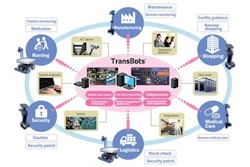
The economy is growing and fueling consumer demand. In the first quarter of 2021, the U.S. economy grew 6.4%, and further growth is forecasted. Although the pandemic set companies back and catalyzed an economic downturn, experts say there is much to be optimistic about.
The rules of the game have changed
After more than a year of economic suppression, a firestorm of pent-up demand is sweeping the sourcing landscape, and supply chain managers and procurement officers are struggling to extinguish the fire. As a result, distributors, manufacturers, and retailers alike are faced with the twin realities of pandemic-driven disruption and its aftermath -- materials shortages, shipping delays and skyrocketing demand.
Before the pandemic, best practices for the supply chain emphasized resilience and lean inventory management. But, in a post-pandemic world, the rules of the game have changed. To succeed on this new playing field, supply chain professionals must adopt a more proactive, agile model to defend against disruption and adapt in real-time to rising demand.
Consumer expectations have evolved
Over the last several years, consumer expectations have been steadily evolving, but the global pandemic only served to accelerate this evolution. More than ever, customer experience is increasingly taking place at the intersection of digital (online) space and a physical place (a brick-and-mortar retail location). For many retailers, this intersection represents uncharted territory. Owners and operators must struggle to balance and integrate a convenient and compelling digital presence with the benefits and alluring attractions of traditional in-store service.
As consumer expectations continue to rapidly evolve and complexify, so too must supply chain best practices. This is a tall order. Supply chain and retail expertise are two separate specialties. But, without supply chain savvy, the ability to accurately forecast consumer demand, and the ability to proactively procure inventory, the risk is high that retailers will lose customers to the likes of competitors.
Deliver data-driven insights and solutions
Artificial intelligence (AI) applications deliver data-driven solutions that ensure the transparency, traceability, flexibility and predictability that have become a do-or-die proposition for supply chain security and market success. Making the shift from dependence on traditional forecasting to deploying AI-driven insights is the difference between viewing the night sky with the naked eye and viewing it through a powerful telescope.
With the naked eye, you may be able to perceive select constellations and scatterings of stars, but the stunning detail of the Milky Way or the rings and moons of Saturn will remain completely hidden from view. AI applications provide a telescopic view and unparalleled insights into every point of the purchasing journey, including precise data on particular products, stores, geographic locations and more.
Optimize inventory management
As mentioned before, consumer expectations have dramatically evolved. In a digital world, companies must anticipate dozens if not hundreds of virtual touchpoints along the purchase journey. As a result, inventory management has become dizzyingly complex, making it exponentially more difficult to avoid the costly risks of inventory excesses or shortages. For consumer packaged goods (CPG) and retail companies, the inability to accurately forecast inventory needs is especially problematic, making data-driven solutions essential.
Advanced analytics and machine learning supplant guesswork and provide the quantifiable data on which effective inventory management depends. Only this way can retail and CPG companies see around corners to predict demand, anticipate shortages and optimize inventory accordingly.
Optimize distribution
Globalization has brought daunting distribution challenges that can be among the most vexing and daunting elements of supply chain management. With globalization comes both greater opportunity and greater threat. For instance, while offshore manufacturing can be a cost-saving choice, care must be taken to ensure that distribution costs do not result in a negative net profit margin. Reconciling competing areas of cost is referred to in management science as the practice of making deliberate trade-offs. AI applications automate this practice, providing companies with data-driven insights to optimize distribution volume, speed, scope, scale and more.
The bedrock of Industry X.0
What McKinsey & Company calls “Industry X.0” is only accelerating, making an investment in digital evolution mandatory for market success. Accenture defines Industry X.0 as:
● “A new digital paradigm for businesses to embrace constant technological change and profit from it.
● Businesses that move beyond experimenting with IT bundles or social, mobile, analytics, cloud (SMAC) stacks, combining digital technologies to drive both top-line and bottom-line growth.
● Businesses that incorporate Industry 4.0’s core operational efficiencies, but also leverage combinations of advanced digital technologies to continuously create new, hyper-personalized experiences in both a business-to-consumer and business-to-business context.”
Data-driven solutions are the heart of Industry X.0, and AI applications are its bedrock. Retailers that embrace these applications stand the best chance of capturing loyalty to fuel market success and ROI.
The rules of the games have changed, and AI applications are now table stakes for successfully competing on a rapidly evolving playing field. Retail and CPG companies are faced with a do-or-die proposition -- adapt with AI applications and data-driven solutions or perish. Those who succeed in this mission will prove to be the market leaders of tomorrow.




















